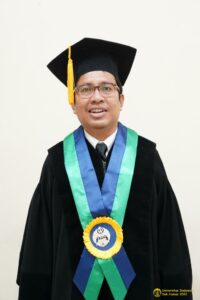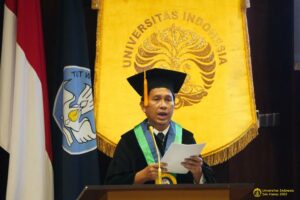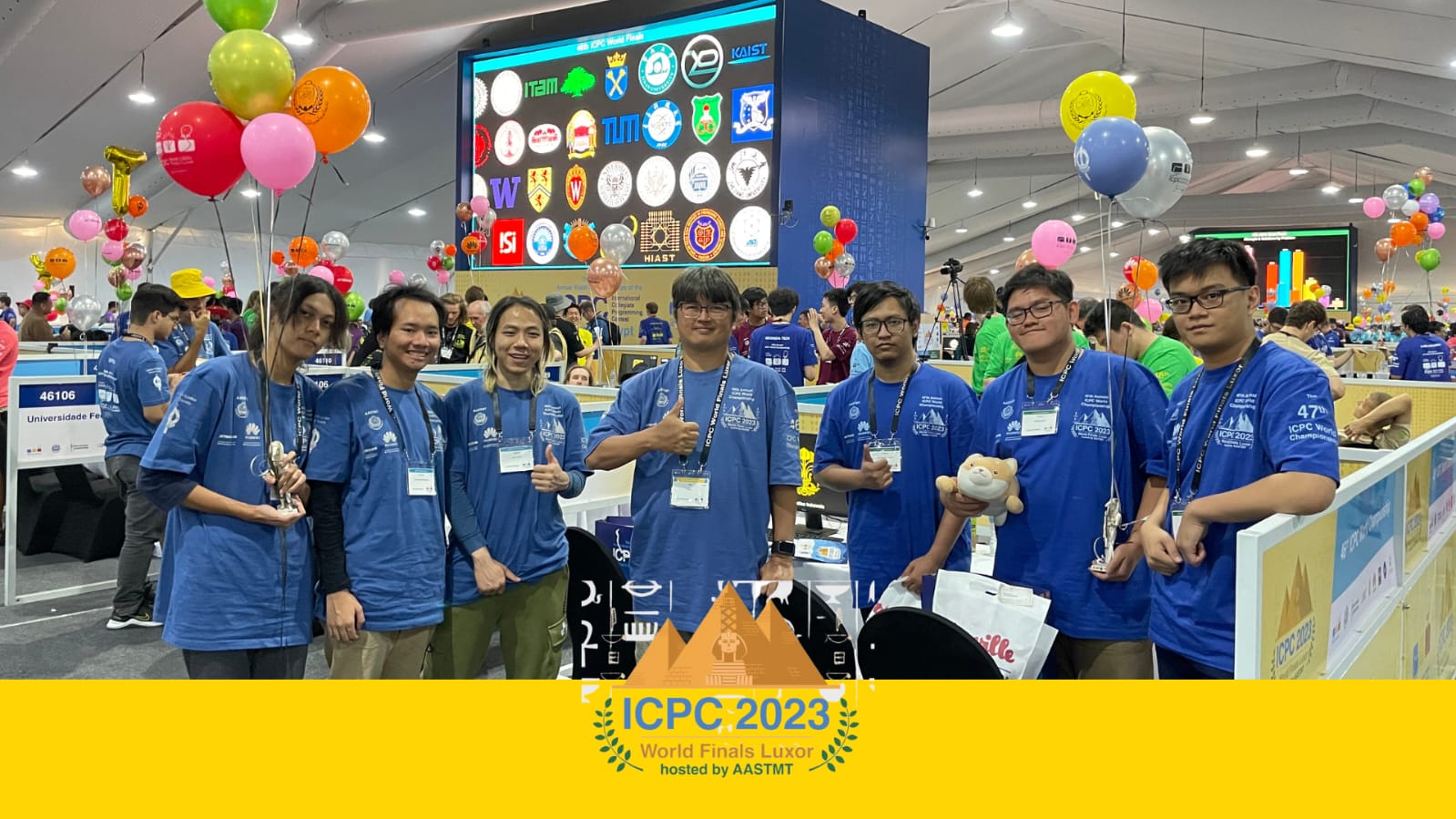
PROF. ANTON BAHTIAR: THE ROLE OF RANKL/RANK SIGNALING PATHWAY IN THE DEVELOPMENT OF ANTI-OSTEOPOROSIS DRUG
Osteoporosis is a bone disease characterized by declined bone mass and structure which results in increased fragility and the risk of bone fractures. According to research conducted by International Osteoporosis Foundation (IOF), 1 in 3 women and 1 in 5 men aged over 50 years have a risk of developing osteoporosis, and it is estimated that the incidence of hip fractures in 2050 will increase fourfold.
In the inauguration speech of the Professor of the Faculty of Pharmacy, Universitas Indonesia (FF UI), Prof. Dr. apt. Anton Bahtiar, M.Biomed., he explained about RANKL, which is a ligand of RANK, included in the TNF (Tumor Necrosis Factor) ligand. RANKL is produced by osteoblasts, osteocytes, and activated T cells. When RANKL is bound to RANK, it will induce differentiation and trigger the commitment of osteoclast precursors to fuse into mature, multinucleated osteoclasts. Meanwhile, to regulate RANKL, there is osteoprotegerin (OPG) which will bind to RANKL to prevent RANKL from binding to RANK, so osteoclastogenesis or osteoclast activation does not occur and trigger osteoclast apoptosis (Nedeva et al. 2021).
“Learning from RANK/RANKL signaling in the development of this drug, which has previously produced potent anti-RANKL antibody drugs, other targets in a similar pathway can be developed which can produce drugs that are more potent, safe, and affordable,” said Prof. Anton in his inaugural speech entitled “Peran Jalur Pensinyalan RANKL/RANK Dalam Pengembangan Obat Anti-Osteoporosis” (The Role of RANKL/RANK Signaling Pathway in the Development of Anti-Osteoporosis Drugs). Furthermore, he stated that it is time for research in the field of pharmacology to be developed in a molecular direction to determine drug action mechanisms and specific drug targets, so apart from producing publications at the international level, it is also possible to obtain drug candidates that can be used in society.

The inauguration ceremony of Prof. Anton was led by Secretary of Professors Council (DGB) UI Prof. Dr. drg. Indang Trihandini, M.Kes., in offline and online mode at Balai Sidang, UI Campus, Depok, and broadcast virtually via UI and UI Teve Youtube channel. The inauguration was also attended by Member of the Regional Representative Council of the Republic of Indonesia (DPD RI), Dr. Muhammad Hilmy; Deputy Governor of West Sumatra Dr. Ir. Audy Joinaldy, S.Pt, M.Sc, MM, IPM, ASEAN.Eng .; Chairman of the National Police Commission Dr. Irjen (Pur) Benny Mamoto; Vice Chancellor of President University Handa Abidin, SH, LLM, Ph.D .; Professor of Universitas Negeri Malang Prof. Dr. Nurul Murtadho, M.Pd .; Dean of the Faculty of Pharmacy UHAMKA Dr. apt. Hadi Sunaryo; Head of Pharmacology and Toxicology Research Group, National Research and Innovation Agency (BRIN), Dr. Kurnia Agustini, M.Si., Apt.; and National Standardization Body/National Accreditation Committee, apt. Neni Widyana, S.SI., M.S.E.
Prof. Anton is the 19th UI Professor who was inaugurated in 2022. He was appointed a Tenured Professor in the field of Molecular Pharmacology FFUI. Currently, Prof. Anton serves as the Manager of Research, Innovation, and Community Service FFUI and the Supervisor of Pharmacology and Toxicology Laboratory FFUI. He earned his Bachelor of Pharmacy at the Faculty of Mathematics and Natural Sciences (FMIPA) UI in 1997. At the same faculty and campus, he graduated from the Pharmacist profession program in 1998. Then Prof. Anton managed to get his Doctorate degree from Nara Institute of Science and Technology, Japan, in 2010.
Several titles of his latest scientific works in the area of pharmaceutical sciences include Andrographolide-Loaded Ethosomal Gel for Transdermal Application: Formulation and In Vitro Penetration Study (2021), Identification Of Fgfr Inhibitor As St2 Receptor/Interleukin-1 Receptor-Like 1 Inhibitor in Chronic Obstructive Pulmonary Disease due to Exposure to E-Cigarettes by Network Pharmacology and Molecular Docking Prediction (2022), Phytochemistry, Antioxidant Activity and Cytotoxicity Evaluation of Black-White Fungus Auricularia sp. against Breast MCF-7 Cancer Cells (2022), Maresin-1 Induces Cardiomyocyte Hypertrophy Through IGF-1 Paracrine Pathway (2021), and Evaluation of The Combination of Kemuning 27 Leaves Extracts and Simvastatin on Blood Fatty Acids and Amino Acids of Hyperlipidemic Model Rats (2021).
Author: Mariana



